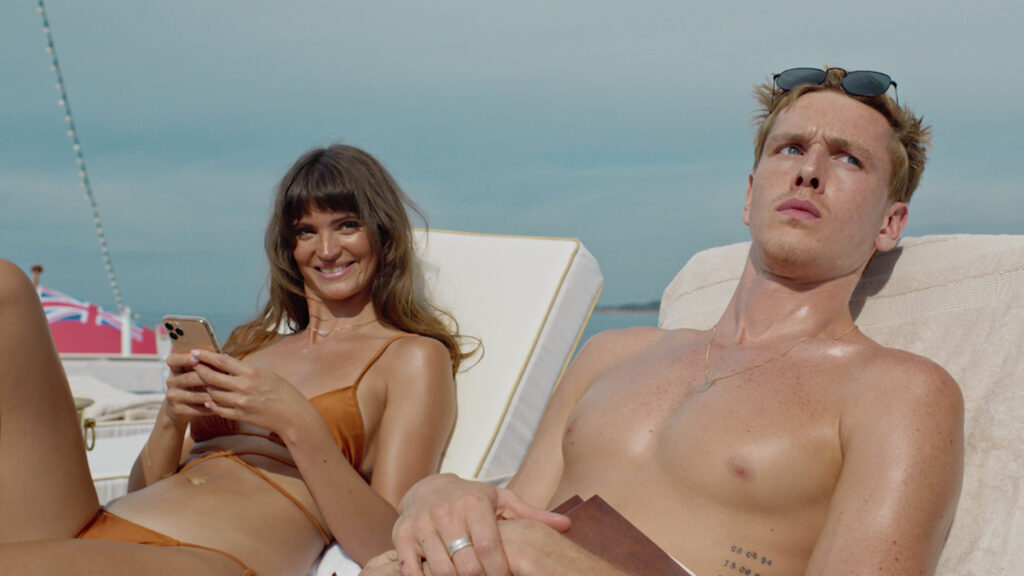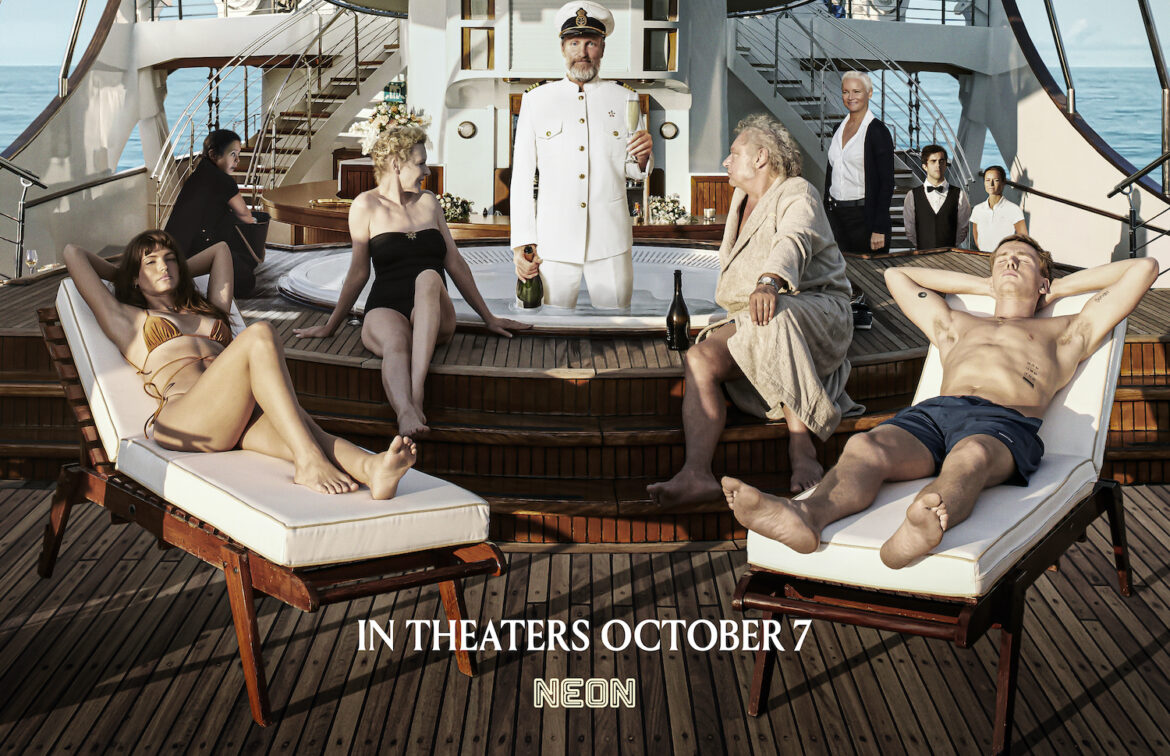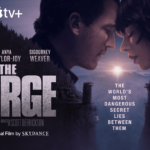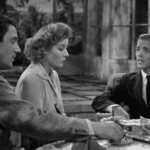Director Ruben Östlund’s ‘Triangle of Sadness’, his first English language film, is the latest of his “satires” following 2017’s ‘The Square’. Whereas “The Square” targeted the art world, “Triangle of Sadness” pokes fun more broadly at the rich and beautiful, who seem to float through life with no cares and certainly no consideration for those of lesser statuses.
The film begins by looking at two young British models, who squabble over money on a date. The male model’s made to pay, and his girlfriend says “I think it’s unsexy to talk about money.” Another way to put that could be “I’ve never had to”, but despite their ease in the wealthy society, and her influencer status, they are never put on the highest of financial pedestals we see later.
Östlund reserves the more obvert skewering of the wealthy in Part 2, when we find the young models on a rich yacht with mega-millionaire eccentrics all around. On the boat, capitalism is on full display, as Woody Harrleson’s communist captain, fully advantaged by capitalism, debates communism with a capitalist Russian businessman, the staff cheer for tips – for which they’ll do near anything – and a lonely businessman promises Rolex’s for everyone for a minor gesture of friendship. In this world wealth and beauty are all that matter.
Östlund’s best work is in Part 3, and the part for which I’ll reserve the most discussion for fear of spoilers; however, this is truly the most, and regretfully only, intriguing concept of the movie. What if these characters no longer have the wealth and power that’s got them to where they are? Indeed this could have been (and has been) an entire film premise; however, Östlund spent far too much time establishing characters whose very essence we’re made to find distasteful, and thus by the time we arrive at the final part we’re emotionally exhausted.

Carl & Yaya (Performed by Harris Dickinson and Carlbi Dean)
I used “satire” in quotes earlier, because in many ways it fails at being the one thing it’s supposed to be. Many of the characters can be buffoonish; however, their wealth is not on display as much as I’d think necessary for the point, and perhaps because it’s “not sexy to talk about money”, you’re not routinely reminded of what the skewering is for. Show do not tell, is what I’d tell Östlund. Likewise satire is intended to be a form of humor; however, this movie has one laugh line in its entire run, a moment with a couple of elderly British arms manufacturers, and even this is muted and fleeting.
Regrettably even Part 3, the only redeeming moment of the film, and certainly not one worthy of redeeming the entire film, is entirely predictable. By the time you get to the ending of the film itself, you’ve undoubtedly already figured it out. This makes the film even more unsatisfying as it comes to its close.
I was curious as I reflected on this film’s failures: are “eat the rich” films just played out? Have we been here and done that too many times of late, especially with ‘White Lotus’, ‘Succession’, and other successes such as these? And while the answer is perhaps yes, ‘Triangle of Sadness’ failed so utterly on its own, that I cannot blame over familiarity with the premise alone. Instead Östlund seems to have lost the point. Simply including rich, beautiful people in a film does not make for a witty message about said people. A film needs to say something, and when you expect to see something, and receive nothing, it’s all the more depressing. “Triangle of Sadness” may have hoped to convey a message, but the sadness of this entire endeavor is the only part that stuck.









